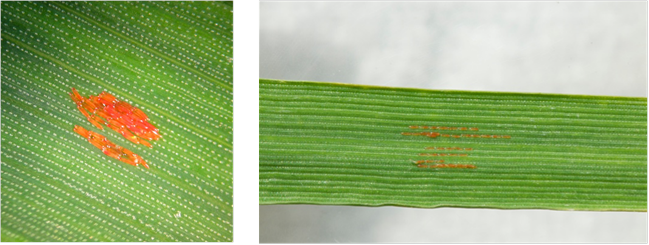Saddle gall midge
The saddle gall midge is approx 5mm in length (females are larger) and red in colour. The females can lay up to 250 blood-red eggs on the upper and lower surfaces of the leaves of cereal and grass plants. Eggs hatch to reveal white or light orange larvae within 1-2 weeks. The larvae change to bright orange as they mature. The larvae feed on the stem sheath below the leaf which produces a characteristic saddle-shaped contour on the stem. Larvae reach maturity in July before dropping from the plant and lying dormant in the soil until the following spring.
Timing of adult midge emergence varies according to temperature and soil moisture, however, the larvae usually pupate from April. Emergence can, therefore, begin at the end of April in warm conditions and usually continues for approximately 10 weeks.

The larvae can remain in the soil for several years, allowing an unhealthy population to build up and increase damage to crops. Late sown winter crops and spring crops of wheat and barley are most at risk when the larval feeding coincides with stem extension (GS31–39) crops are at the highest risk.
Sowing winter crops early can reduce the potential damage from the pest. Introducing a non-cereal break crop may provide some benefit, and encouraging a biologically healthy soil can encourage the soil biodiversity required to enhance Integrated Pest Management.
Visit the Crop Health Update webpage for timely, monthly advice about saddle gall midge. Find out more about Integrated Pest Management.
Related information
Sign up to the FAS newsletter
Receive updates on news, events and publications from Scotland’s Farm Advisory Service
